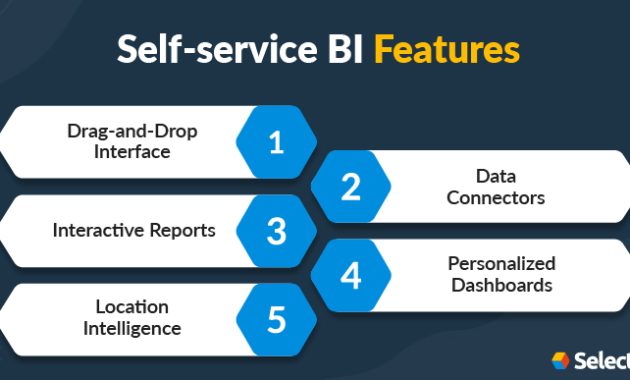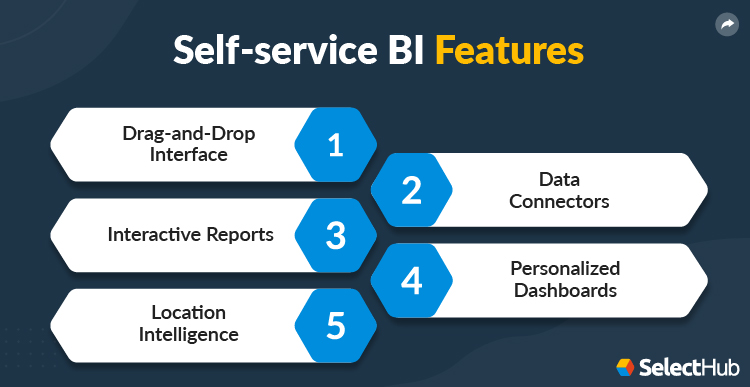
Self-Service Business Intelligence Software: A Revolution in Data Accessibility
The business landscape is undergoing a profound transformation. Driven by the relentless accumulation of data, organizations are increasingly reliant on insights to make informed decisions. In this context, self-service business intelligence software has emerged as a critical tool. It empowers users, regardless of their technical expertise, to explore data, generate reports, and uncover valuable insights. This article delves into the world of self-service business intelligence software, exploring its features, benefits, and the crucial role of a smart user experience (UX).
Democratizing Data: The Rise of Self-Service BI
Traditional business intelligence (BI) solutions often required specialized skills and were primarily accessible to data analysts and IT professionals. This created bottlenecks, limiting the ability of other departments to leverage data effectively. Self-service business intelligence software addresses this limitation by providing a user-friendly interface. This allows individuals to access, analyze, and visualize data without extensive technical training. This democratization of data fosters a data-driven culture, where decisions are based on evidence rather than intuition.
Core Features of Self-Service Business Intelligence Software
Self-service business intelligence software offers a range of features designed to empower users. These features typically include:
- Data Integration: The ability to connect to various data sources, including databases, spreadsheets, cloud services, and more.
- Data Preparation: Tools for cleaning, transforming, and shaping data for analysis. This includes data cleansing, data merging, and data type conversion.
- Data Visualization: A variety of charts, graphs, and dashboards to represent data visually. This makes it easier to identify patterns, trends, and outliers.
- Interactive Dashboards: Customizable dashboards that allow users to monitor key performance indicators (KPIs) in real-time.
- Reporting: Tools for creating and sharing reports with colleagues and stakeholders.
- Data Discovery: Features like natural language querying (NLQ) and automated insights to help users explore data and uncover hidden patterns.
The Importance of Smart UX in Self-Service BI
The success of self-service business intelligence software hinges on its usability. A smart UX is essential for making the software accessible and intuitive. A well-designed UX ensures that users can easily navigate the platform, understand the data, and generate meaningful insights. Key elements of a smart UX include:
- Intuitive Interface: A clean and uncluttered interface with clear navigation and easy-to-understand icons and labels.
- Drag-and-Drop Functionality: Simplifies data manipulation and report creation.
- Mobile Accessibility: The ability to access and interact with data on mobile devices.
- Personalization: The option for users to customize the interface and dashboards to meet their specific needs.
- Contextual Help: Built-in help and tutorials to guide users through the software.
Benefits of Implementing Self-Service BI Software
Organizations that adopt self-service business intelligence software can realize numerous benefits:
- Faster Decision-Making: Users can access and analyze data quickly, enabling faster and more informed decisions.
- Improved Collaboration: Data and insights can be easily shared across departments, fostering collaboration and alignment.
- Increased Efficiency: Automating tasks and reducing reliance on IT departments frees up resources and improves efficiency.
- Enhanced Data Literacy: Empowers employees to work with data, fostering a data-driven culture.
- Cost Savings: Reduced reliance on specialized data analysts can lead to cost savings.
Choosing the Right Self-Service Business Intelligence Software
Selecting the right self-service business intelligence software is crucial for success. Consider the following factors when evaluating different solutions:
- Ease of Use: The software should have an intuitive interface and be easy to learn and use.
- Data Connectivity: Ensure the software can connect to all relevant data sources.
- Data Visualization Capabilities: The software should offer a wide range of visualization options.
- Reporting Capabilities: The software should provide tools for creating and sharing reports.
- Scalability: The software should be able to handle increasing data volumes and user demand.
- Security: The software should offer robust security features to protect sensitive data.
- Pricing: Choose a solution that fits your budget and offers a suitable licensing model.
Smart UX: The Differentiator in Self-Service BI
In a crowded market, the user experience is a key differentiator for self-service business intelligence software. A smart UX makes the software more accessible, enjoyable, and effective. Companies that prioritize UX are more likely to see higher adoption rates and greater business value. The best self-service business intelligence software provides a seamless and intuitive experience. This helps users focus on extracting insights rather than struggling with the platform itself.
Real-World Examples: Self-Service BI in Action
Many organizations across various industries are successfully using self-service business intelligence software. For example, a retail company can use the software to analyze sales data, identify popular products, and optimize inventory levels. A marketing team can use it to track campaign performance, analyze customer behavior, and improve marketing ROI. A healthcare provider can use it to monitor patient outcomes, identify areas for improvement, and optimize resource allocation. These diverse applications underscore the versatility and value of self-service business intelligence software.
The Future of Self-Service BI
The future of self-service business intelligence software is bright. We can expect to see continued advancements in several areas:
- Artificial Intelligence (AI) Integration: AI-powered features, such as automated insights and predictive analytics, will become increasingly prevalent.
- Natural Language Processing (NLP): Improved NLQ capabilities will make it easier for users to ask questions and get answers.
- Enhanced Data Governance: Robust data governance features will ensure data quality and compliance.
- Increased Mobile Accessibility: More emphasis will be placed on providing seamless mobile experiences.
These advancements will further empower users and drive the adoption of self-service business intelligence software.
Conclusion: Embrace the Power of Self-Service BI with Smart UX
Self-service business intelligence software is transforming the way businesses operate. By empowering users with data, organizations can make faster, more informed decisions and gain a competitive edge. The key to success lies in choosing a solution with a smart UX that is intuitive, accessible, and easy to use. As the technology continues to evolve, self-service business intelligence software will play an even more critical role in driving business success. Embrace the power of data, and unlock the full potential of your organization. Consider the impact of a smart UX when selecting your self-service business intelligence software.
[See also: Related Article Titles]

